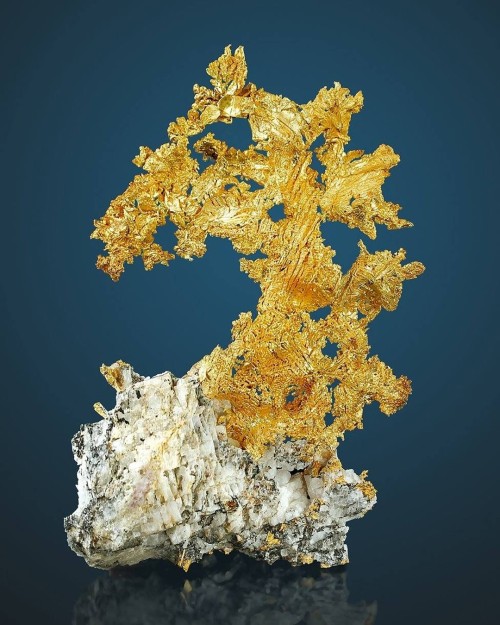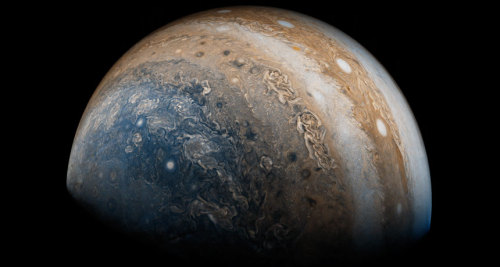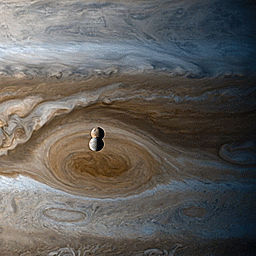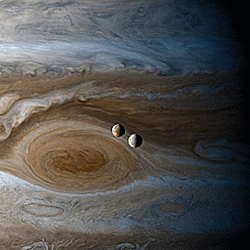Excuse Me Everyone I’m Gonna Go Become A Minor God Of Crows Now



Excuse me everyone i’m gonna go become a minor god of crows now
More Posts from Starry-shores and Others

Welcome to….DEVONIAN PARK. Please don’t tap the glass (the dunks are very sensitive).

50 Foot Long Congo Snake
In 1959 Remy Van Lierden was flying over the Katanga region in the Democratic Republic of the Congo. He was flying a helicopter and returning to the base that he commanded in Kamina. As he passed over a clearing in the jungle he noticed a large animal laying out in the sun. What he saw was a 50 foot long snake, with green and brown scales. He couldn’t believe his eyes and neither could his passengers. He circled around and made several passes off the monstrous snake, however he flew away when it got into the striking position and thought it was too dangerous to contour to fly over the animal. During one of the passes he made a passenger on his aircraft snapped this picture to prove what they saw. The snake in question is clearly large and it’s easy to see how it could have been a threat to a low flying helicopter. It’s believed that the snake is a Titanoboa which is thought to be extinct, and has been for millions of years. But it’s possible that the species may have survived. The natives claim that the snake pictured here is a small one and that they can get up to twice and three times the size.

Hubble Observes Infant Stars in Nearby Galaxy by NASA Hubble
The Kepler space telescope has shown us our galaxy is teeming with planets — and other surprises

The Kepler space telescope has taught us there are so many planets out there, they outnumber even the stars. Here is a sample of these wondrous, weird and unexpected worlds (and other spectacular objects in space) that Kepler has spotted with its “eye” opened to the heavens.
Kepler has found that double sunsets really do exist.

Yes, Star Wars fans, the double sunset on Tatooine could really exist. Kepler discovered the first known planet around a double-star system, though Kepler-16b is probably a gas giant without a solid surface.
Kepler has gotten us closer to finding planets like Earth.

Nope. Kepler hasn’t found Earth 2.0, and that wasn’t the job it set out to do. But in its survey of hundreds of thousands of stars, Kepler found planets near in size to Earth orbiting at a distance where liquid water could pool on the surface. One of them, Kepler-62f, is about 40 percent bigger than Earth and is likely rocky. Is there life on any of them? We still have a lot more to learn.
This sizzling world is so hot iron would melt!

One of Kepler’s early discoveries was the small, scorched world of Kepler-10b. With a year that lasts less than an Earth day and density high enough to imply it’s probably made of iron and rock, this “lava world” gave us the first solid evidence of a rocky planet outside our solar system.
If it’s not an alien megastructure, what is this oddly fluctuating star?

When Kepler detected the oddly fluctuating light from “Tabby’s Star,” the internet lit up with speculation of an alien megastructure. Astronomers have concluded it’s probably an orbiting dust cloud.
Kepler caught this dead star cannibalizing its planet.

What happens when a solar system dies? Kepler discovered a white dwarf, the compact corpse of a star in the process of vaporizing a planet.
These Kepler planets are more than twice the age of our Sun!

The five small planets in Kepler-444 were born 11 billion years ago when our galaxy was in its youth. Imagine what these ancient planets look like after all that time?
Kepler found a supernova exploding at breakneck speed.

This premier planet hunter has also been watching stars explode. Kepler recorded a sped-up version of a supernova called a “fast-evolving luminescent transit” that reached its peak brightness at breakneck speed. It was caused by a star spewing out a dense shell of gas that lit up when hit with the shockwave from the blast.
* All images are artist illustrations.
Make sure to follow us on Tumblr for your regular dose of space: http://nasa.tumblr.com

Gold | #Geology #GeologyPage #Minerals #usa
Locality: Eagle’s Nest Mine, Placer Co., California, USA
Size: 9 x 6.1 x 1.8 cm
Photo Copyright © Anton Watzl Minerals
Geology Page www.geologypage.com — view on Instagram https://scontent-iad3-2.cdninstagram.com/v/t51.2885-15/241701518_397503718379467_3401054776149613851_n.jpg?_nc_cat=111&ccb=1-5&_nc_sid=8ae9d6&_nc_ohc=wAvIbpLfPz8AX-dtOaF&_nc_ht=scontent-iad3-2.cdninstagram.com&edm=ANo9K5cEAAAA&oh=65ffb23e4a191f038c3511d14c41803d&oe=61421C8F
Ultra-Close Orbits of Saturn = Ultra-Cool Science
On Sept. 15, 2017, our Cassini spacecraft ended its epic exploration of Saturn with a planned dive into the planet’s atmosphere–sending back new science to the very last second. The spacecraft is gone, but the science continues!

New research emerging from the final orbits represents a huge leap forward in our understanding of the Saturn system – especially the mysterious, never-before-explored region between the planet and its rings. Some preconceived ideas are turning out to be wrong while new questions are being raised. How did they form? What holds them in place? What are they made of?

Six teams of researchers are publishing their work Oct. 5 in the journal Science, based on findings from Cassini’s Grand Finale. That’s when, as the spacecraft was running out of fuel, the mission team steered Cassini spectacularly close to Saturn in 22 orbits before deliberately vaporizing it in a final plunge into the atmosphere in September 2017.

Knowing Cassini’s days were numbered, its mission team went for gold. The spacecraft flew where it was never designed to fly. For the first time, it probed Saturn’s magnetized environment, flew through icy, rocky ring particles and sniffed the atmosphere in the 1,200-mile-wide (2,000-kilometer-wide) gap between the rings and the cloud tops. Not only did the engineering push the spacecraft to its limits, the new findings illustrate how powerful and agile the instruments were.
Many more Grand Finale science results are to come, but today’s highlights include:
Complex organic compounds embedded in water nanograins rain down from Saturn’s rings into its upper atmosphere. Scientists saw water and silicates, but they were surprised to see also methane, ammonia, carbon monoxide, nitrogen and carbon dioxide. The composition of organics is different from that found on moon Enceladus – and also different from those on moon Titan, meaning there are at least three distinct reservoirs of organic molecules in the Saturn system.

For the first time, Cassini saw up close how rings interact with the planet and observed inner-ring particles and gases falling directly into the atmosphere. Some particles take on electric charges and spiral along magnetic-field lines, falling into Saturn at higher latitudes – a phenomenon known as “ring rain.” But scientists were surprised to see that others are dragged quickly into Saturn at the equator. And it’s all falling out of the rings faster than scientists thought – as much as 10,000 kg of material per second.

Scientists were surprised to see what the material looks like in the gap between the rings and Saturn’s atmosphere. They knew that the particles throughout the rings ranged from large to small. They thought material in the gap would look the same. But the sampling showed mostly tiny, nanograin- and micron-sized particles, like smoke, telling us that some yet-unknown process is grinding up particles. What could it be? Future research into the final bits of data sent by Cassini may hold the answer.

Saturn and its rings are even more interconnected than scientists thought. Cassini revealed a previously unknown electric current system that connects the rings to the top of Saturn’s atmosphere.

Scientists discovered a new radiation belt around Saturn, close to the planet and composed of energetic particles. They found that while the belt actually intersects with the innermost ring, the ring is so tenuous that it doesn’t block the belt from forming.

Unlike every other planet with a magnetic field in our Solar System, Saturn’s magnetic field is almost completely aligned with its spin axis. Think of the planet and the magnetic field as completely separate things that are both spinning. Both have the same center point, but they each have their own axis about which they spin. But for Saturn the two axes are essentially the same – no other planet does that, and we did not think it was even possible for this to happen. This new data shows a magnetic-field tilt of less than 0.0095 degrees. (Earth’s magnetic field is tilted 11 degrees from its spin axis.) According to everything scientists know about how planetary magnetic fields are generated, Saturn should not have one. It’s a mystery physicists will be working to solve.

Cassini flew above Saturn’s magnetic poles, directly sampling regions where radio emissions are generated. The findings more than doubled the number of reported crossings of radio sources from the planet, one of the few non-terrestrial locations where scientists have been able to study a mechanism believed to operate throughout the universe. How are these signals generated? That’s still a mystery researchers are looking to uncover.
For the Cassini mission, the science rolling out from Grand Finale orbits confirms that the calculated risk of diving into the gap – skimming the upper atmosphere and skirting the edge of the inner rings – was worthwhile.

Almost everything going on in that region turned out to be a surprise, which was the importance of going there, to explore a place we’d never been before. And the expedition really paid off!
Analysis of Cassini data from the spacecraft’s instruments will be ongoing for years to come, helping to paint a clearer picture of Saturn.
To read the papers published in Science, visit: URL to papers
To learn more about the ground-breaking Cassini mission and its 13 years at Saturn, visit: https://www.nasa.gov/mission_pages/cassini/main/index.html
Make sure to follow us on Tumblr for your regular dose of space: http://nasa.tumblr.com.
Eclipsing Suns
I can’t remember which novel JR said influenced the world of S6, but I was recently reminded of Asimov’s Nightfall and wonder whether its eclipse narrative might have some bearing on the plot …
[Spoilers for Nightfall ahead – highly recommend you read the story (it’s short!)]
For anyone not familiar, Nightfall is set on a planet with six suns - enough suns that the planet never experiences darkness. Every 2000 years or so, the suns and the planet’s moon align just so, and an eclipse occurs. And every 2000 years, something cataclysmic occurs that ends civilization. The only records of the event are embedded in the mythology of an ancient cult’s scripture.
During one of these cycles, a team of astronomers and psychologists collaborate with the cult, and together determine that they are weeks away from the next eclipse. The scientists lock their loved ones away in a bunker and prepare equipment to document the eclipse, which they do not believe they will survive. (Having never experienced nighttime, they have a pathological fear of the dark. Even more concerning, however, is the threat of the Stars mentioned in ancient scripture, for these have the power to burn cities and drive men to madness.)
And when the eclipse occurs and people see the night sky for the first time in two thousand years, they are struck with terror and knowledge of their insignificance, and all the world over, people set their cities on fire to blot out the stars’ truth and the horror of the long night.
… What little we do know about S6 reminds me of this. Like Clarke and co., these scientists attempt to learn what happened to a lost civilization (Eligius III) while hampered by a cult-like organization (Second Dawn? Wonkru? Whoever now inhabits the planet?) that has attached mythological meaning to the natural phenomenon of the eclipse. JR has said that something crucial happens when the suns eclipse, and though suns eclipsing themselves does not create total darkness, as here, we can guess that there will be psychological ramifications attached to it.
-
 silent-endsinger liked this · 2 years ago
silent-endsinger liked this · 2 years ago -
 severe-brain-wiggles liked this · 3 years ago
severe-brain-wiggles liked this · 3 years ago -
 oleandersnowstorm liked this · 3 years ago
oleandersnowstorm liked this · 3 years ago -
 tboy-perpetua liked this · 3 years ago
tboy-perpetua liked this · 3 years ago -
 starry-shores reblogged this · 3 years ago
starry-shores reblogged this · 3 years ago -
 an-abyss-called-life liked this · 3 years ago
an-abyss-called-life liked this · 3 years ago -
 beating-beetle-heart liked this · 3 years ago
beating-beetle-heart liked this · 3 years ago -
 pittiring liked this · 3 years ago
pittiring liked this · 3 years ago -
 theclockworkowl liked this · 3 years ago
theclockworkowl liked this · 3 years ago -
 beaglerlove liked this · 3 years ago
beaglerlove liked this · 3 years ago -
 l0stmoth liked this · 3 years ago
l0stmoth liked this · 3 years ago -
 thetiredfroggy liked this · 3 years ago
thetiredfroggy liked this · 3 years ago -
 g0red0g liked this · 3 years ago
g0red0g liked this · 3 years ago -
 dusty-brain liked this · 3 years ago
dusty-brain liked this · 3 years ago -
 michael-beeloved liked this · 3 years ago
michael-beeloved liked this · 3 years ago -
 jormy liked this · 3 years ago
jormy liked this · 3 years ago -
 metaltitanblue liked this · 3 years ago
metaltitanblue liked this · 3 years ago -
 abstracted-psychopomp reblogged this · 3 years ago
abstracted-psychopomp reblogged this · 3 years ago -
 abstracted-psychopomp liked this · 3 years ago
abstracted-psychopomp liked this · 3 years ago -
 wool-coat-magpie liked this · 3 years ago
wool-coat-magpie liked this · 3 years ago -
 chaos-cubed liked this · 3 years ago
chaos-cubed liked this · 3 years ago -
 iseneith liked this · 3 years ago
iseneith liked this · 3 years ago -
 igecko1320 reblogged this · 3 years ago
igecko1320 reblogged this · 3 years ago -
 igecko1320 liked this · 3 years ago
igecko1320 liked this · 3 years ago -
 lemonsweetmint liked this · 3 years ago
lemonsweetmint liked this · 3 years ago -
 chalk-tea liked this · 4 years ago
chalk-tea liked this · 4 years ago -
 cubecrunchie reblogged this · 4 years ago
cubecrunchie reblogged this · 4 years ago -
 a-name-if-you-please reblogged this · 4 years ago
a-name-if-you-please reblogged this · 4 years ago -
 proudly-a-killjoy liked this · 4 years ago
proudly-a-killjoy liked this · 4 years ago -
 hazardperceptiontest liked this · 4 years ago
hazardperceptiontest liked this · 4 years ago -
 varian-polis reblogged this · 4 years ago
varian-polis reblogged this · 4 years ago -
 toryo reblogged this · 4 years ago
toryo reblogged this · 4 years ago -
 bansheebarr reblogged this · 4 years ago
bansheebarr reblogged this · 4 years ago -
 moxieestar liked this · 4 years ago
moxieestar liked this · 4 years ago -
 anon-platypus reblogged this · 4 years ago
anon-platypus reblogged this · 4 years ago -
 medieval-florida-man reblogged this · 4 years ago
medieval-florida-man reblogged this · 4 years ago -
 stitchedhat reblogged this · 4 years ago
stitchedhat reblogged this · 4 years ago -
 solar-galaxy-gardener liked this · 4 years ago
solar-galaxy-gardener liked this · 4 years ago -
 moonmelonme reblogged this · 4 years ago
moonmelonme reblogged this · 4 years ago -
 spice-and-raging-kittens liked this · 4 years ago
spice-and-raging-kittens liked this · 4 years ago -
 lowercase-exasperation reblogged this · 4 years ago
lowercase-exasperation reblogged this · 4 years ago -
 lowercase-exasperation liked this · 4 years ago
lowercase-exasperation liked this · 4 years ago -
 yackychan liked this · 4 years ago
yackychan liked this · 4 years ago -
 sincerevioletdragonfly reblogged this · 4 years ago
sincerevioletdragonfly reblogged this · 4 years ago -
 sincerevioletdragonfly liked this · 4 years ago
sincerevioletdragonfly liked this · 4 years ago -
 the-patience-bean liked this · 4 years ago
the-patience-bean liked this · 4 years ago -
 westcoastwaterscanada reblogged this · 4 years ago
westcoastwaterscanada reblogged this · 4 years ago -
 little-clown-boy liked this · 4 years ago
little-clown-boy liked this · 4 years ago

Amateur astronomer, owns a telescope. This is a side blog to satiate my science-y cravings! I haven't yet mustered the courage to put up my personal astro-stuff here. Main blog : @an-abyss-called-life
212 posts














